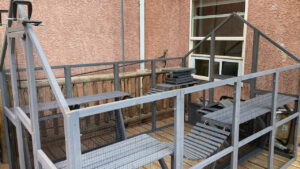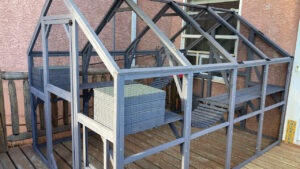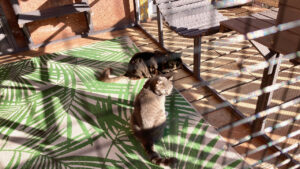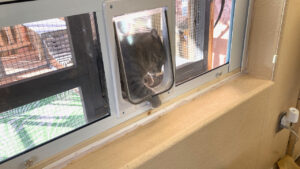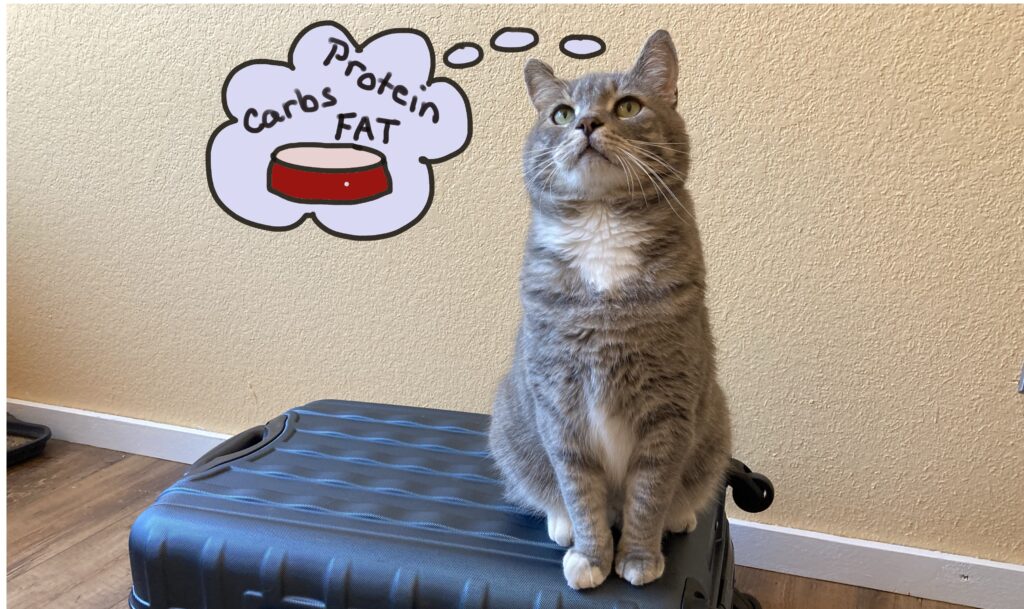
In the last post, we spoke about your cat and some of her unique nutritional needs. She is an obligate carnivore, designed to eat small animals but she does have some flexibility and can use carbohydrates for energy. Lean times are hard for cats and their livers are slow to process stored fat. Unlike other mammals, her body does not synthesize the amino acids, taurine and arginine, and these must be provided in her diet.
Cats dine on small rodents, rabbits, birds, reptiles and insects. They will consume the entire animal, fur, tendons, blood, gut contents… Even if your cat is an active outdoor hunter, you are going to offer her some food and will probably turn to some of the many commercial cat foods available.
feeding your cat A complete and balanced diet
A feral cat gets about 52% of his energy from protein and 46% from the fat of the prey he eats. Your cat will need a diet with protein and fat. Like other animals, the cells in his body require glucose (a carbohydrate) to function. Cats typically use proteins for energy and produce glucose via gluconeogenesis, regardless of fasting or starvation. But cats are flexible and if they consume a minimum amount of protein, they can use dietary carbohydrate as a source of glucose, and spare the proteins for other tasks, such as building and repairing tissues and acting as hormones (reference 3). When feeding your cat, you will want to offer him some fat and carbohydrates, in addition to protein.
How much fat? carbohydrates? protein?
Like people, cats are individuals and their dietary intake varies. Most of the time, we feed our cats and note if they gain or lose weight, and adjust their intake accordingly.
What is a complete and balanced diet for a cat? A complete and balanced diet will provide the cat all the nutrition she needs, including essential amino acids, protein, fat and minerals. Most pet foods on the market will have a label stating that the food is formulated according to the guidelines established by the American Association of Feed Control Officials (AAFCO) or in Europe, the European Pet Food Industry Federation (FEDIAF). We look briefly at the AAFCO guidelines.
About AAFCO
The original guidelines were formulated in 1990 and have been revised several times; the latest iteration was in 2007-2008. The guidelines establish nutrient concentrations for ingredients typically sourced for pet food. Nutrients include protein, fat, essential amino acids, vitamins and minerals.
AAFCO profiles guarantee that the product contains the minimum (or maximum) concentrations for the nutrients in the profile. For example, protein in excess of the minimum concentration is acceptable whereas a maximum concentration for Vitamin D avoids concerns with toxicity. There are two profiles for cats: one for “growth and reproduction” and a second for “adult maintenance”. The chart below shows the recommendations for fat and protein in cat foods. (Reference 1)
| AAFCO Nutrient Profile | Protein | Fat |
|---|---|---|
| Growth & Reproduction | 30% | 9% |
| Adult Maintenance | 26% | 9% |
The Cat Food Label:
The label that goes on a can or bag of cat food has eight items. We will focus on item 4: the Guaranteed Analysis. This is a list of the percentage of each of the nutrients in the food. The minimum percent of crude protein and crude fat, and the maximum percent of crude fiber and moisture must be included. (See Feeding Your Cat: Choosing a Food for more about AAFCO labels).
Fats
There is not an established requirement for fat. The minimum concentration of 9% in the AAFCO guidelines is based on recognition of the role that fat plays in the diet: a source of essential fatty acids, a carrier of fat-soluble vitamins, enhances palatability, and supplies adequate calories. (Reference 1)
Fats are used for energy (providing 9 kcals/g) and if there is more fat than the cat needs in his diet, he will store it – like those “chonky” cats on the internet. Fats also increases the palatability of the diet and may encourage over-eating. There are low-calorie diets containing less than 9% fat that have an AAFCO label.
Carbohydrates
Carbohydrates are not listed in the guaranteed analysis. An estimated percentage of carbohydrates can be calculated by adding up the protein, fat, crude fiber, moisture and ash listed in the guaranteed analysis and subtracting this total from 100%. (Reference 2).
In the wild, cats eat a diet that is primarily protein and fat. This leads many folks to think that cats do not need or use carbohydrates. But like other animals, their cells require glucose to function. They can either get this by breaking down protein or from dietary carbohydrate.
Carbohydrates are necessary in the processing of commercial cat food, particularly kibble. Most commercial dry foods contain 33-45% as carbohydrates (dry matter)(Reference 4); canned foods tend to have less than 10%.
Some carbohydrates in the cat’s diet will not present a problem providing he gets enough protein. Too much carbohydrate (even highly digestible carbohydrates) can cause diarrhea, flatulence and bloating (Reference 3). Feeding your cat too much carbohydrate can also “dilute” the protein in the food – the cat may reach satiety before getting his necessary protein. Diets greater than 60% dry matter risk nutrient unbalance. Even smaller amounts (50% dry matter) can be a problem – for example, kittens need a lot of protein and too many carbohydrates will reduce the protein available to them. (Reference 4)
And Now for Protein…
Your cat is an obligate carnivore and protein is an essential part of a cat’s complete and balanced diet. Cats have distinct dietary requirements for protein and these will be the subject of the next post in “Feeding Your Cat”.
References
- AAFCO Methods for Substantiating Nutritional Adequacy of Dog and Cat Foods. https://www.aafco.org/
- Heinz, C. “Carb Confusion: Part 2. Measuring and Comparing Carbohydrates in Pet Foods” (9/27/21) https://vetnutrition.tufts.edu/2021/09/carb-confusion-part-2-measuring-carbs/.
- Verbrugghe A, Hesta M. Cats and Carbohydrates: The Carnivore Fantasy? Vet Sci. 2017 Nov 15;4(4):55. doi: 10.3390/vetsci4040055. PMID: 29140289; PMCID: PMC5753635.
- Kirk, Claudia. “Feline Nutrition: What Is Excess Carbohydrate?”. Purina Companion Animal Nutrition Summit: Tackling Myths About Pet Nutrition, Atlanta, GA March 21-23, 2013.
Want to keep up with the world of cats? Subscribe to The Feline Purrspective!
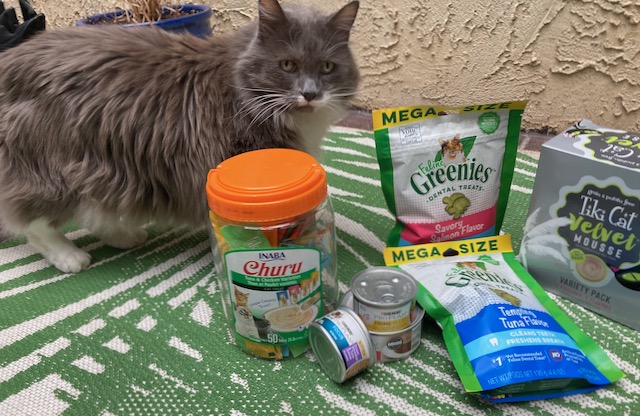 Cats are what we call “obligate carnivores” – they have evolved to eat a diet primarily of animal meat. They have small stomachs, short intestinal tracts, and are designed to eat frequently. A feral cat eats eats the equivalent of 6-8 mice as he hunts from dusk to dawn. In addition to small rodents, reptiles, birds, insects, and rabbits are also on the menu. He consumes the entire prey, including the blood, hair, skin, bones, tendons, and gut contents. These prey are high in protein, have some fat, but little carbohydrate. A feral cat gets about 52% of his energy from protein and 46% from the fat of the prey he eats.
Cats are what we call “obligate carnivores” – they have evolved to eat a diet primarily of animal meat. They have small stomachs, short intestinal tracts, and are designed to eat frequently. A feral cat eats eats the equivalent of 6-8 mice as he hunts from dusk to dawn. In addition to small rodents, reptiles, birds, insects, and rabbits are also on the menu. He consumes the entire prey, including the blood, hair, skin, bones, tendons, and gut contents. These prey are high in protein, have some fat, but little carbohydrate. A feral cat gets about 52% of his energy from protein and 46% from the fat of the prey he eats.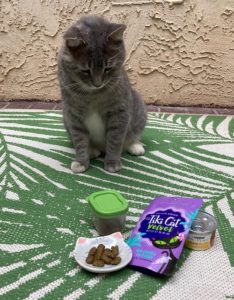
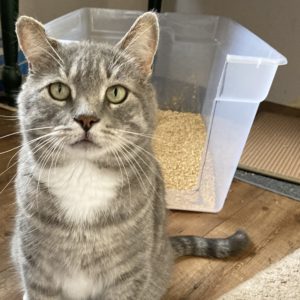 In celebration of Earth Day, this week’s post continues to focus on sustainable cat care. One of your cat’s essential resources is his litter box. Litter boxes are typically made of plastic but there are many choices of litter box filler. How can your choice of cat box filler help in reducing your cat’s carbon pawprint?
In celebration of Earth Day, this week’s post continues to focus on sustainable cat care. One of your cat’s essential resources is his litter box. Litter boxes are typically made of plastic but there are many choices of litter box filler. How can your choice of cat box filler help in reducing your cat’s carbon pawprint?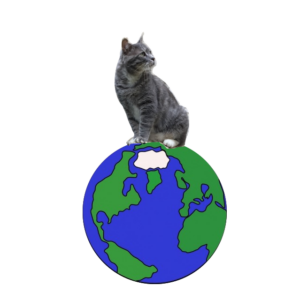
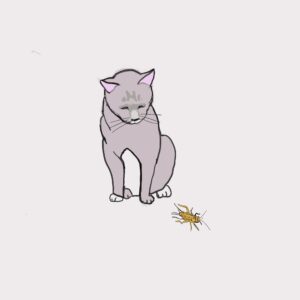
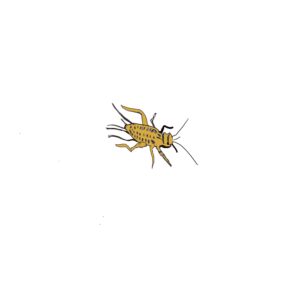 REFERENCES:
REFERENCES: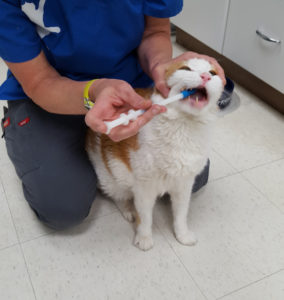
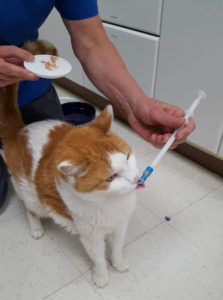
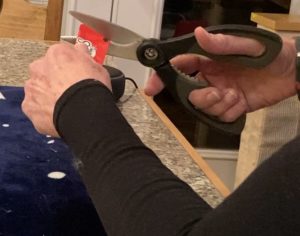
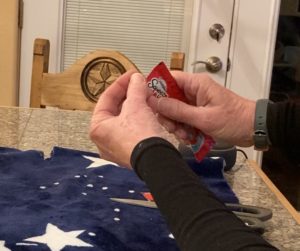
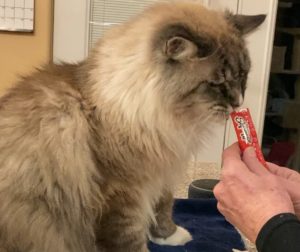
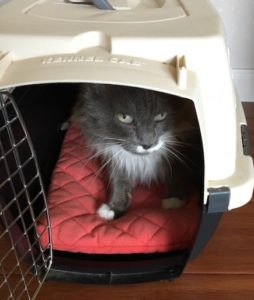
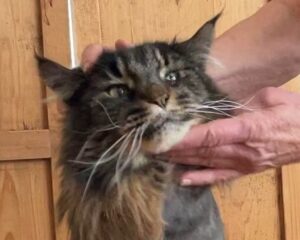 Sedation is one way to relieve anxiety and fear. But sedation works better when your cat is used to being handled. (For more about sedation, see
Sedation is one way to relieve anxiety and fear. But sedation works better when your cat is used to being handled. (For more about sedation, see 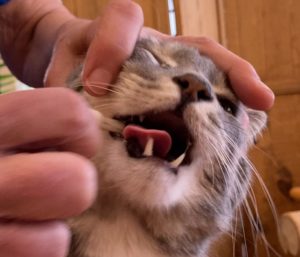 In Part 1 of Brushing Your Cat’s Teeth: Why and How, we learned that brushing your cat’s teeth with a pet toothpaste such as the
In Part 1 of Brushing Your Cat’s Teeth: Why and How, we learned that brushing your cat’s teeth with a pet toothpaste such as the 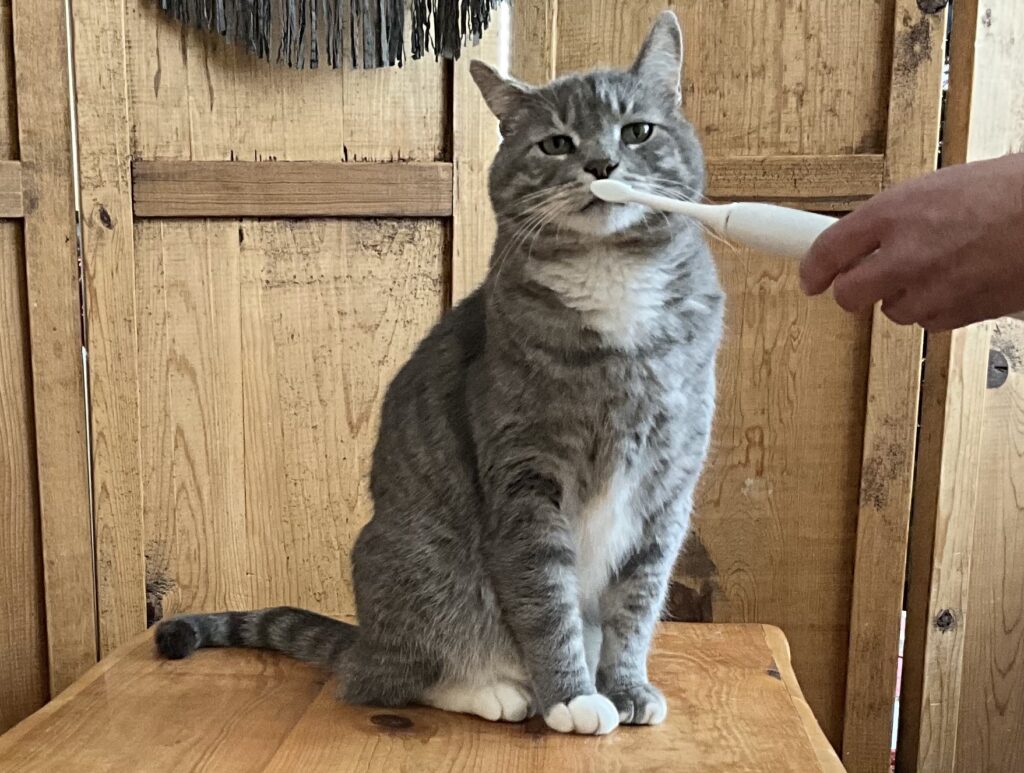
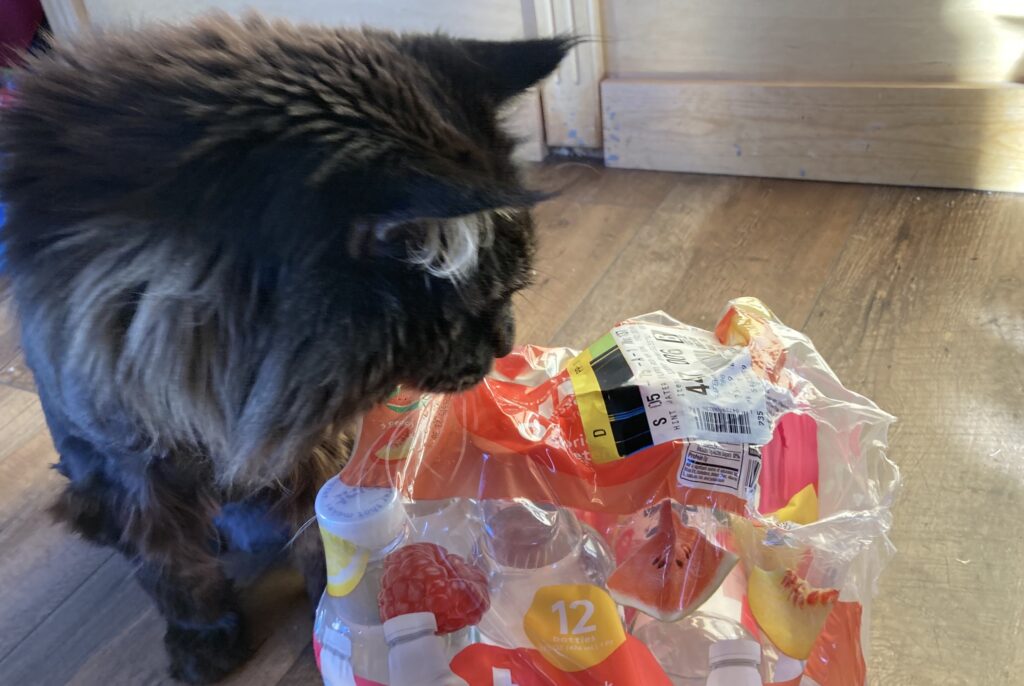 Have you had or do you have a cat who would eat anything – hair ties, ribbons, plastic – in addition to food? Have you experienced the anxiety waiting for your cat to pass whatever object you think he ate? It is not unheard of for cats to eat, chew or suck on non-food items. This behavior is called pica. How do you manage the cat with pica?
Have you had or do you have a cat who would eat anything – hair ties, ribbons, plastic – in addition to food? Have you experienced the anxiety waiting for your cat to pass whatever object you think he ate? It is not unheard of for cats to eat, chew or suck on non-food items. This behavior is called pica. How do you manage the cat with pica?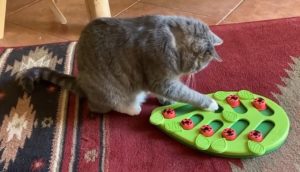 Keeping kitty busy
Keeping kitty busy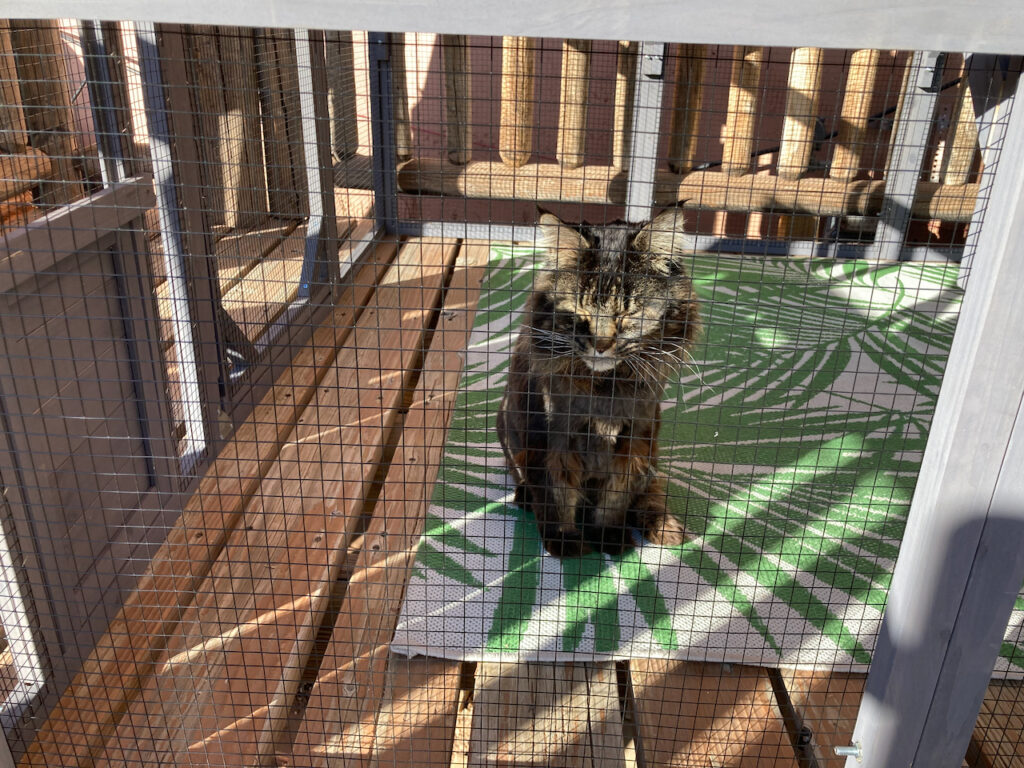 In the U.S., it has become common to keep cats solely indoors. Indoor cats live longer – they are not run over by cars, hunted by coyotes, or injured in cat fights.
In the U.S., it has become common to keep cats solely indoors. Indoor cats live longer – they are not run over by cars, hunted by coyotes, or injured in cat fights.

